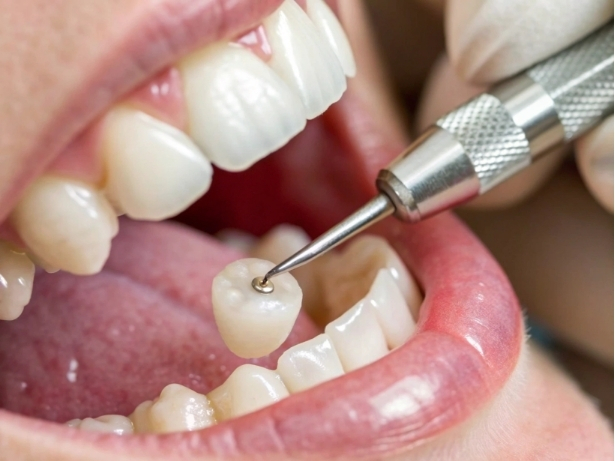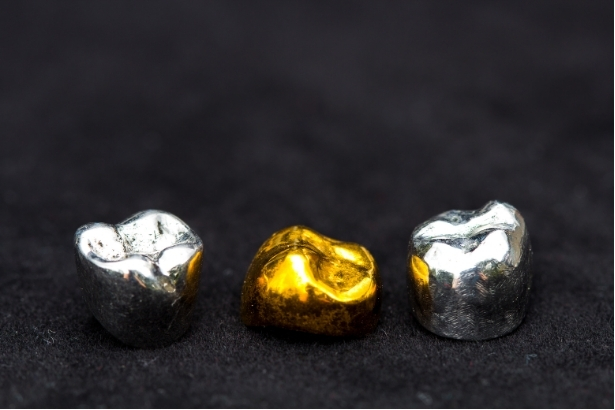Dental Crowns at MyDentist
Replacing a missing tooth is crucial not only for aesthetics but also for maintaining oral health. Missing teeth can cause adjacent teeth to shift, leading to difficulties in biting, chewing, and speaking, and can affect your jawbone and facial structure. Dental bridges are an effective solution to fill the gap left by a missing tooth and stabilize surrounding teeth. Unlike dental implants, bridges are not rooted in the jawbone but are attached to neighboring teeth.

Types of Dental Bridges
Traditional Bridge: This common type involves a pontic tooth attached to two dental crowns covering adjacent teeth. The dentist reshapes the supporting teeth to fit the crowns, which are secured with composite bonding resin.
Cantilever Bridge: Similar to a traditional bridge but supported by a single abutment tooth, making it suitable for back teeth.
Maryland Bridge: Uses metal or porcelain bands attached to adjacent teeth with bonding resin, avoiding the need to reshape supporting teeth. However, they are generally weaker and not ideal for molars.
Metal Crowns
Made from gold or durable alloys, metal crowns are resilient and cause minimal wear to opposing teeth. Ideal for molars, they prioritize functionality over aesthetics due to their metallic appearance.

Ceramic Crowns
Crafted from porcelain, ceramic crowns are perfect for visible teeth, offering a natural and seamless look. While aesthetically superior, they are less durable than other types and best suited for front teeth.
Porcelain-Fused-to-Metal (PFM) Crowns
Combining strength and aesthetics, PFM crowns feature a metal core with a porcelain exterior. While versatile, the metal edge may become visible over time near the gumline.
Zirconia Crowns
These advanced ceramic crowns balance durability with aesthetics. Tooth-colored and exceptionally strong, zirconia crowns are suitable for both front and back teeth.
The Crown Procedure at MyDentist
The Crown Procedure at MyDentist
Our crown placement process involves two appointments:
First Appointment
Preparation: Address any decay or perform necessary treatments like fillings or root canals.
- Reshaping: Enamel is removed to ensure a proper fit. Local anesthesia ensures comfort during this process.
- Impressions: Precise molds or digital scans are taken for custom crown fabrication.
- Temporary Crown: A temporary crown is placed to protect your tooth.
Second Appointment
- Crown Placement: The temporary crown is removed, and the permanent one is carefully fitted.
- Bonding: The crown is secured with durable dental adhesive.
Caring for Your Crown
With proper care, a dental crown can last 10–50 years. Follow these tips to maximize its lifespan:
Brush twice daily with a fluoride toothpaste.
Floss around and under the crown daily.
Avoid excessive force, such as teeth grinding or chewing hard objects.
Schedule regular dental check-ups and cleanings.
While the crown itself is resistant to decay, the underlying tooth remains vulnerable, making oral hygiene crucial.
MyDentist Services
Get In Touch With Us
MyDentist@Middlefield
5200 Finch Avenue E #104, Scarborough, ON M1S 4Z3
Mon – Fri: 10:00 am – 8:00 pm
Sat: 10:00 am – 5:00 pm
647-340-8878
info@my-dentist.ca
MyDentist@Pharmacy
636 Pharmacy Ave, Scarborough, ON M1L 3H5
Mon – Fri: 10:00 am – 8:00 pm
Sat: 10:00 am – 5:00 pm
647-500-7885
pharmacy@my-dentist.ca
Book An Appointment
Book a visit to MyDentist, simply fill out the form below and we will contact you back regarding the intervention you require.



